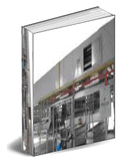What are the applications of prevulcanised latex ?
JohnWoon:Yes, I've discussed the various advantages of prevulcanised latex (PV) in my earlier posting. Here I would like to just mention again in summary as follows:
1) Simple to use
2) Long shelf life
3) Low residual chemicals
4) Low toxicity
5) Maturation and vulcanization not required
6) Better efficiency in leaching
7) One formulation for all seasons
As regards the possible uses of PV, the list could be quite extensive.The following list shows only some important examples of the applications. I'm also including the the basic requirement, recommended types of prevulcanised latex and choice of manufacturing methods.
1) Medical Gloves and Electrian Gloves
Basic requirements: Good tactility and elasticity, low TypeIV Allergic Reaction.
Types of PV : Medium to high modulus.
Method : Coagulant dipping - Single and Multiple.
2) Catheters
Basic requirement: Low toxicity, good balloon symmetry for Foley catheters, good adhesion between dips.
Types of PV : Medium to high modulus.
Method : Multiple coagulant dipping.
3) Toy Balloons
Basic requirement: Low nitrosamine and low nitrosatables, easy to inflate, low bursting rate during printing, good balloon symmetry and sheen.
Types of PV : Low modulus, low nitrosamine.
Method : Single coagulant dipping.
4) Baby Teats and Soothers/Pacifiers
Basic requirement : Low nitrosamine and low nitrosatables, good clarity, good ageing resistance to boiling.
Types of PV : Medium modulus, low nitrosamine, high clarity.
Method : Single coagulant dipping and heat sensitized dipping.
5) Marking Rings
Basic requirement : High tensile strength, high elasticity, low tension set, good ageing resistance.
Type of PV : Medium to high modulus.
Method : Single coagulant dipping.
6) Condoms
Basic requirement : High bursting pressure and volume, high clarity, low TypeIV Allergic Reaction, low toxicity.
Type of PV : High modulus.
Method : Straight double dipping (i.e. with no coagulant)
7) Breathing Bags and Masks (for administering of anesthetic)
Basic requirement : Good elasticity, low toxicity, good fatigue resistance, good ozone resistance.
Type of PV : Medium to high modulus.
Method : Single or double coagulant dipping.
8) Can Sealants
Basic requirement : Low residual chemicals, low toxicity.
Type of PV : Medium to high modulus.
Method : Casting and injecting.
9) Adhesives
Basic requirement : Quick grab, good cohesion and adhesion strength.
Type of PV : Low to high modulus.
Method : Roller coating and brushing.
10) Flooring
Basic requirement : Good outdoor ageing resistance, good bond strength to rubber crumbs.
Type of PV : Medium to high modulus with excellent adhesion to rubber substrate.
Method : Trowelling.
11) Rubber Sheeting (for garments and exercise bands)
Basic requirement : Good elasticity, soft silky feel, latex compound should be easily heat sensitized.
Type of PV : Low to high modulus with good heat sensitizing property.
Method : Coagulant dipping or continuous heat sensitizing casting.
Conclusion
Although both prevulcanised latex and post-vulcanisable latex compound are widely used for the manufacturing of a variety of latex products, the former offers many manufacturers a ready-to-use latex compound with ease of processing which requires simpler process controls with added comparative advantages of low toxicity and long shelf life. As a result, prevulcanised latex has been very popular for the manufacturing of medical devices such as medical gloves, condoms, catheters, baby teats and pacifiers.
You are at the site for answers and solutions to all your problems in natural rubber latex processing and manufacturing of medical gloves, condoms, catheters,babay teats and pacfiers.

















































.jpg)
.jpg)



.jpg)
.jpg)
.jpg)
.jpg)
.jpg)
.jpg)
.jpg)
.jpg)
.jpg)
.jpg)
.jpg)
.jpg)
.jpg)
.jpg)
.jpg)
.jpg)
.jpg)
.jpg)













































0 Comments:
Post a Comment
<< Home